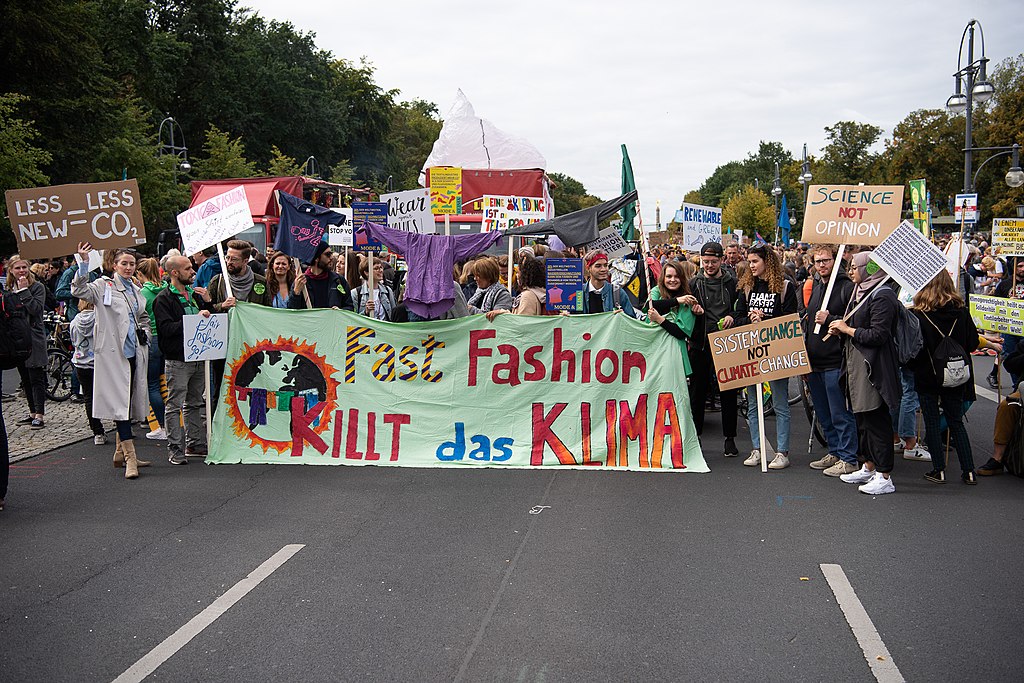Excerpt:
Yvette Yaa Konadu Tetteh’s epic swim down the River Volta highlights the damage done to the country’s waterways by an out-of-control trade in secondhand clothes from the global north, and why it’s time for change.
It’s mid-morning on a sunny day and Yvette Yaa Konadu Tetteh’s arms and legs barely make a splash as she powers along the blue-green waters of the River Volta in Ghana. This is the last leg of a journey that has seen Tetteh cover 450km (280 miles) in 40 days to become the first person known to swim the length of the waterway.
It’s an epic mission but with a purpose: to find out whatis in the water and raise awareness of pollution in Ghana.
As the 30-year-old swims, a crew shadows her on a solar-powered boat, named The Woman Who Does Not Fear, taking air and water samples along the way that will be analysed to measure pollution.
It is hoped that the swim will draw attention to some of the pristine environments in Ghana, in contrast with places such as Korle Lagoon in the capital city of Accra, one of the most polluted water bodies on Earth.
“I want people to understand and appreciate the value we have here in Ghana,” says the British-Ghanaian agribusiness entrepreneur. “The only way I can swim is because the waters [of the Volta River] are hopefully clean. Korle Lagoon was once swimmable but now you wouldn’t want to touch any of it.”
The swim is supported by the Or Foundation, of which Tetteh is a board member, that campaigns against textile waste in Ghana, one cause of increasing water pollution in the country.
Ghana imports about 15m items of secondhand clothing each week, known locally as obroni wawu or “dead white man’s clothes”. In 2021, Ghana imported $214m (£171m) of used clothes, making it the world’s biggest importer.
Donated clothes come from countries including the UK, US and China and are sold to exporters and importers who then sell them to vendors in places such as Kantamanto in Accra, one of the world’s largest secondhand clothing markets.
Kantamanto is a sprawling complex of thousands of stalls crammed with clothes. You can find items from H&M, Levi Strauss, Tesco, Primark, New Look and more. On display at one stall is a River Island top with a creased cardboard price tag showing that, at one point, it was on sale for £6 in a UK Marie Curie charity shop.
As fast fashion – cheap clothes bought and cast aside as trends change – has grown, the volume of clothing coming to the market has increased while the quality has gone down…
Mountains of Old Donated Clothes Choke Beautiful Beach
– CBS Inside Edition (09-18-2021)
Additional Reading:
Dead white man’s clothes – Linton Besser
It’s the dirty secret behind the world’s fashion addiction. Many of the clothes we donate to charity end up dumped in landfill, creating an environmental catastrophe on the other side of the world.
Mountains of clothes washed up on Ghana beach show cost of fast fashion – Liam James
Huge piles of discarded clothes line a beach in Accra, capital of Ghana.
The rags started life thousands of miles from the Gulf of Guinea and their coming to rest on this West African coast reflects the shortcomings of a huge global trade buoyed by fast fashion.
Piles of Discarded Clothes From UK are Washing Up on Ghana Beaches and it’s Worrying – Buzz Staff
It is believed that the unprecedented crisis stems from the fast fashion industry of the UK where new clothes are soon deemed out of fashion and are discarded later. Once rejected or donated, the clothes are loaded on ships and sent to other countries.









